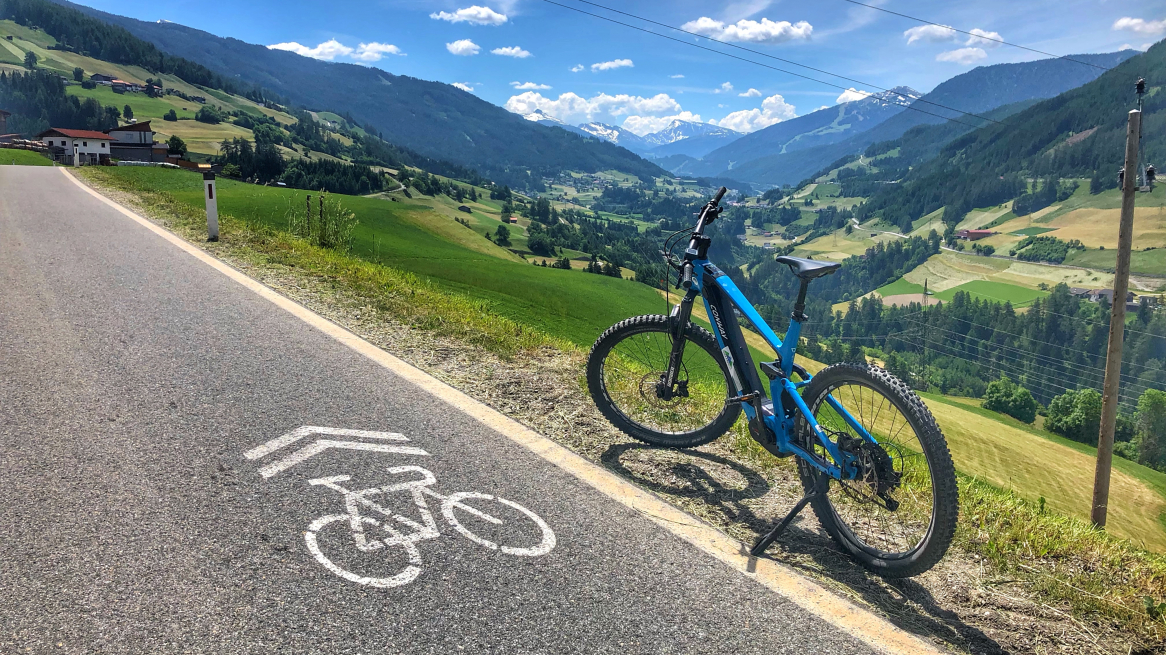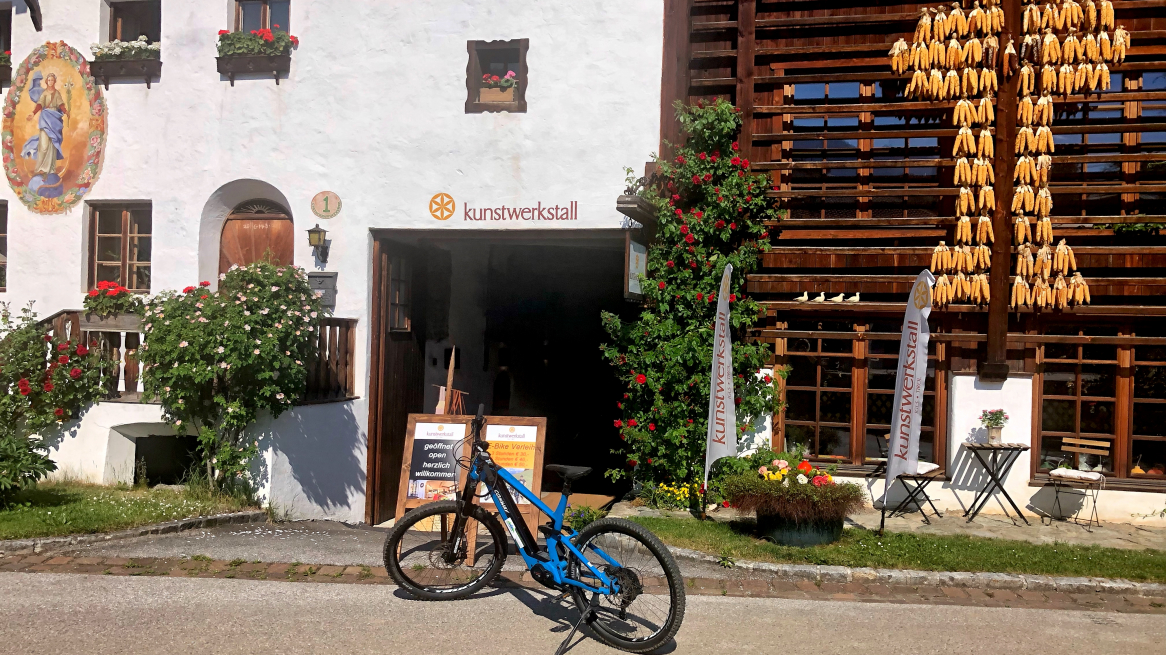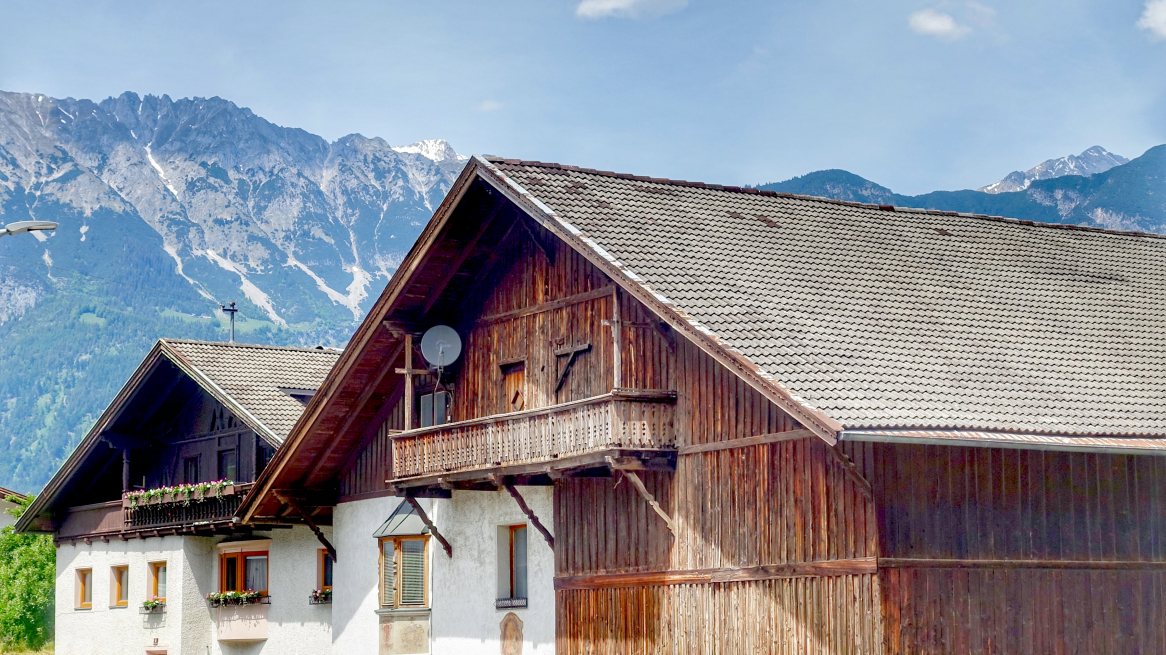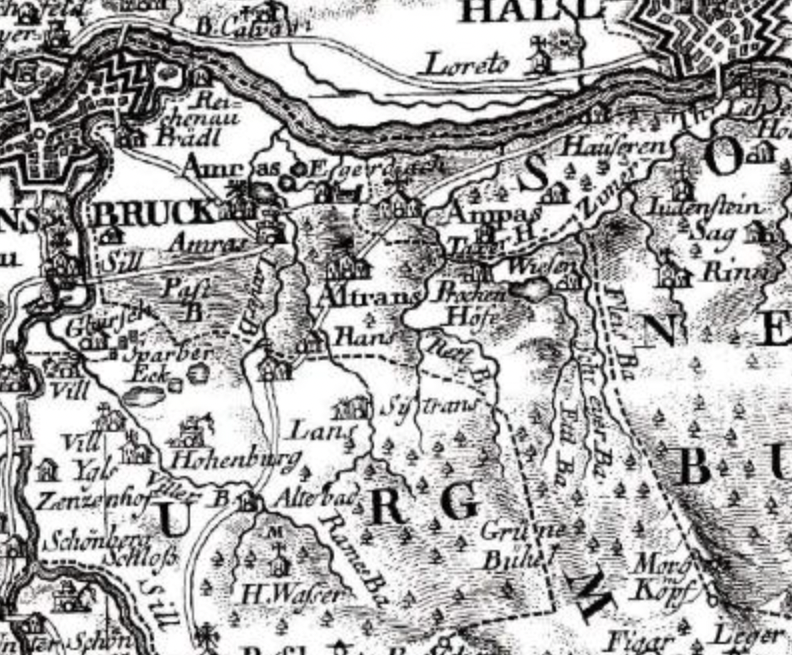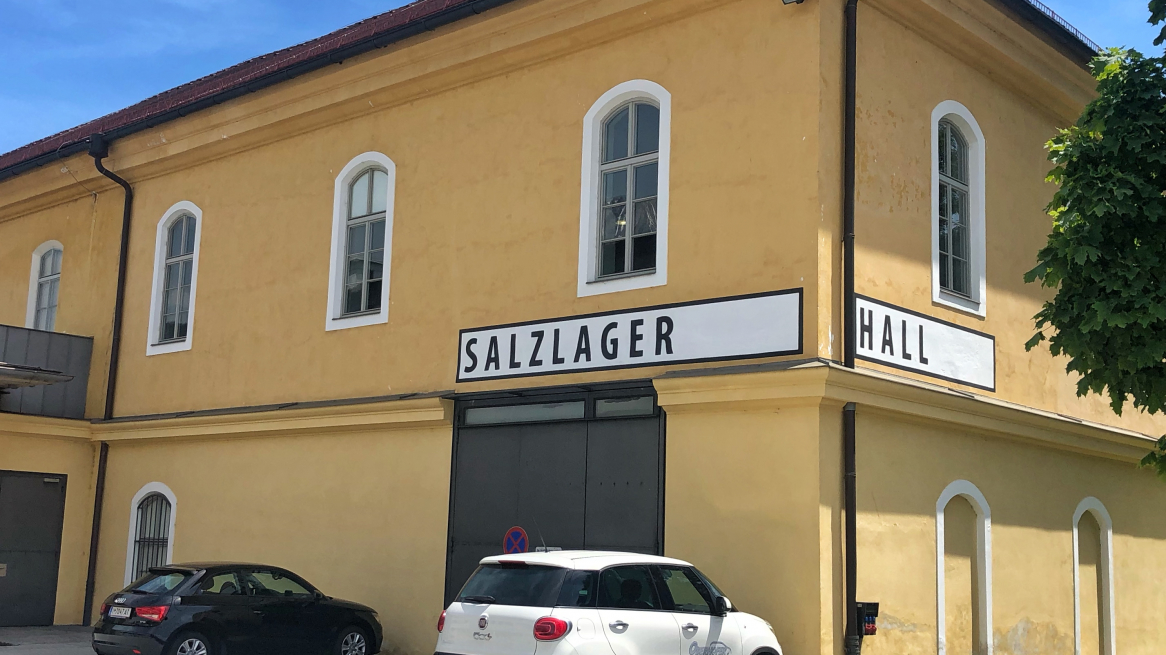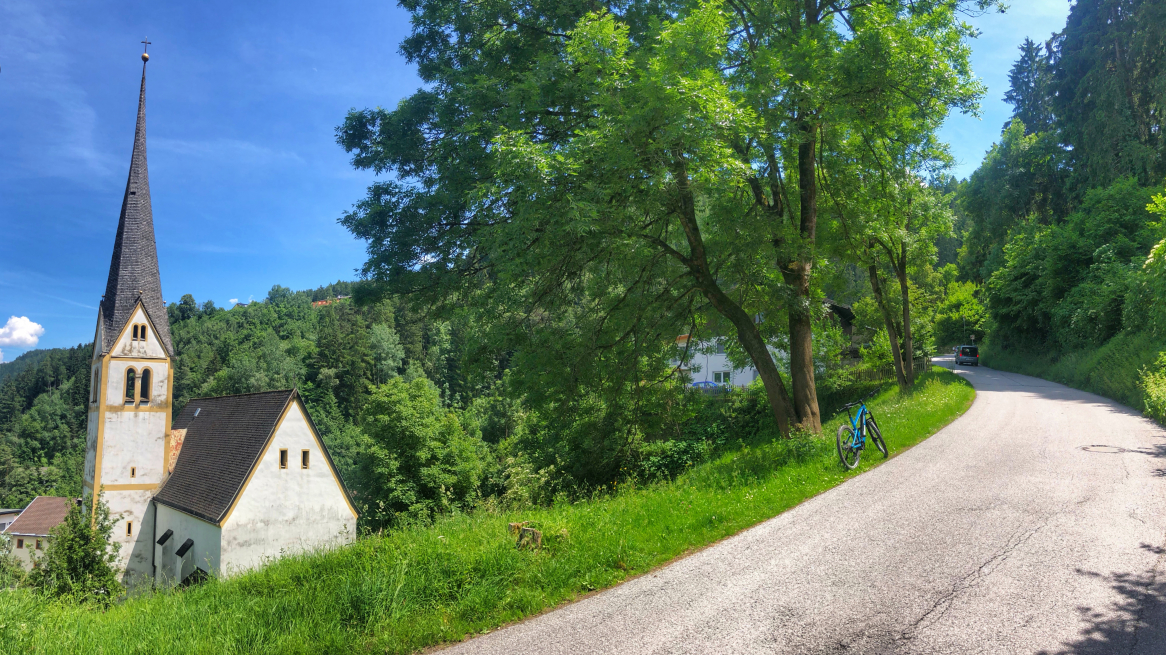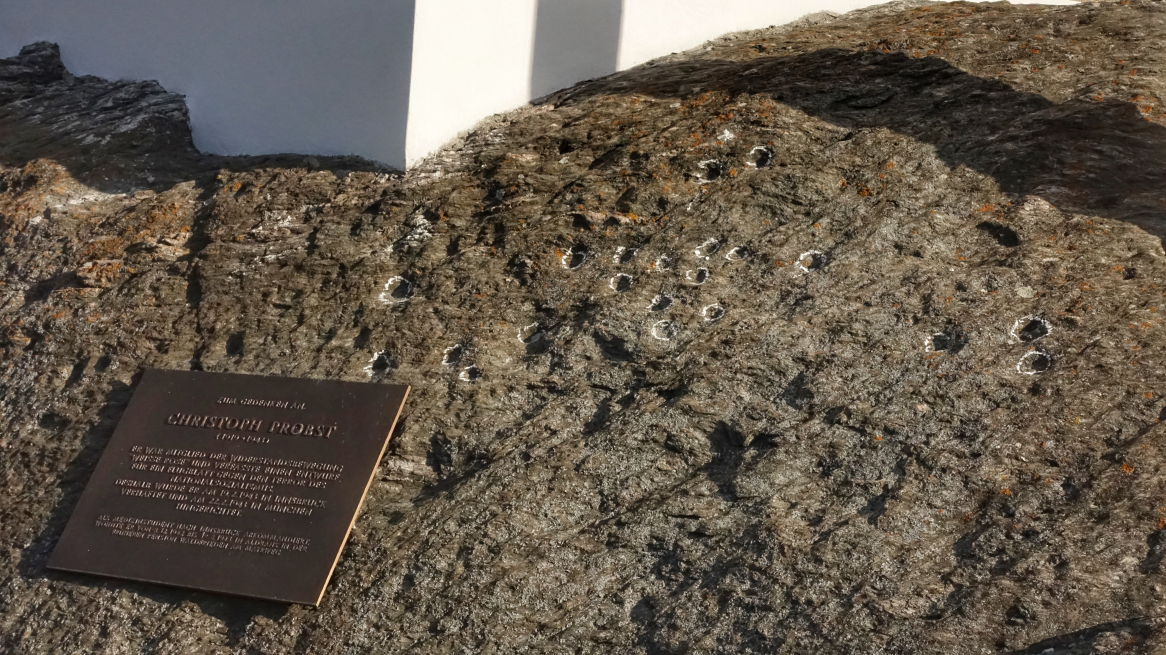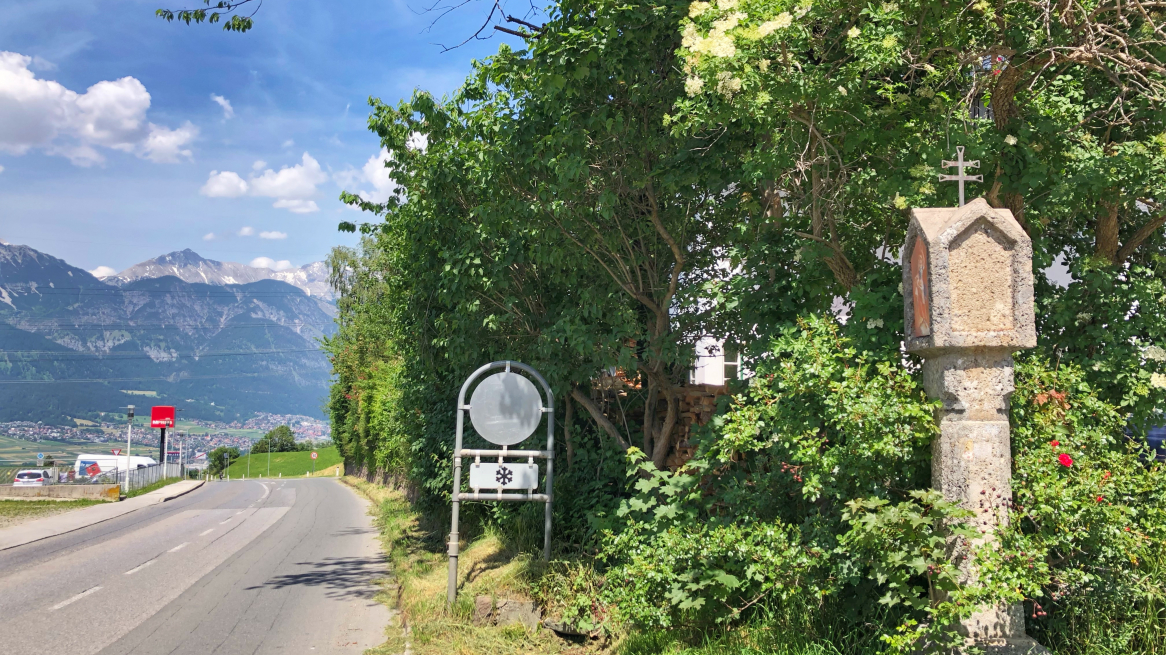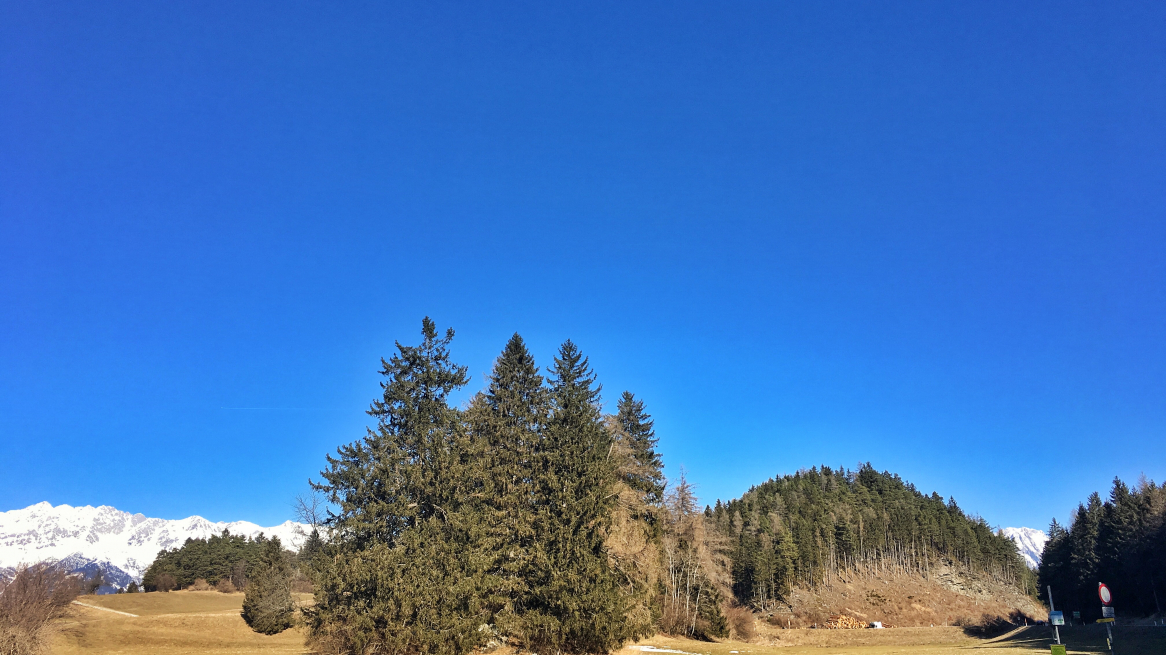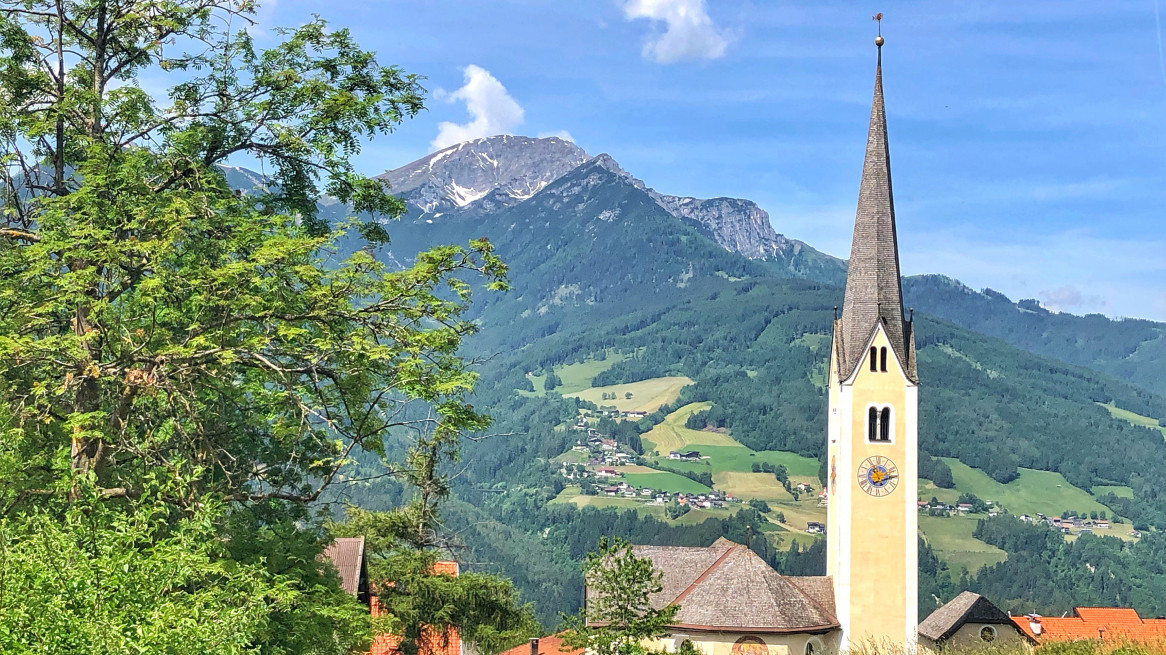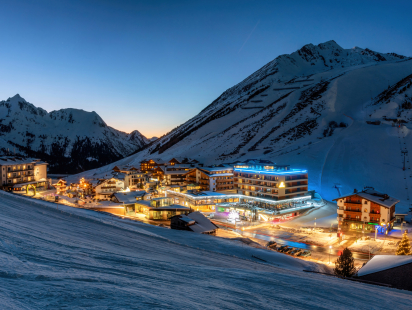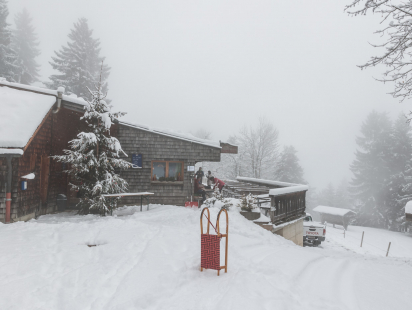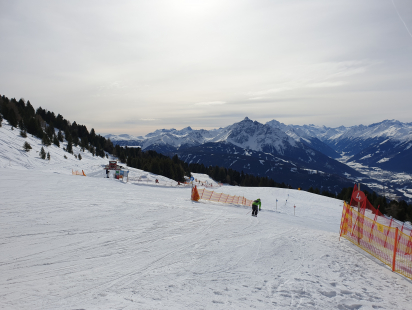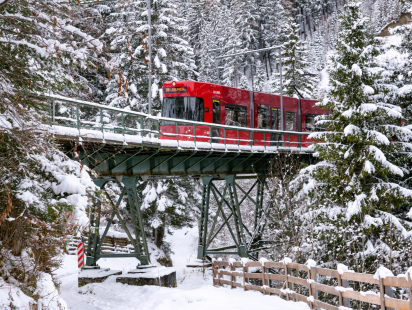In a three-part series I would like to introduce you, dear readers, to those roads as a wonderful e-bike tour, over which the white gold was transported from the Middle Ages to modern times. I will start with the 'Ellbögener Salzstraße'.
In the Middle Ages, Tyrol was blessed with rare mineral resources. The wealth of our country was based on salt and silver. And salt kept the coffers ringing for about 700 years. And so the traces of salt still characterise the appearance of many villages today. Mighty farmhouses and wonderful inns bear witness to Tyrol's former wealth. And so a tour on the salt roads becomes a cultural journey through the centuries. In this article I follow the former salt transports on the 'Ellbögener Straße' from Hall to Matrei am Brenner.
To cover this distance in one day without any problems, I rented an e-bike in Igls at Gilda and Karl Zimmermann an e-bike. The two of them run their subtle 'kunstwerkstall' in the most beautiful house of the village very close to the church. The small E-bike rental they run the small stables on the side.
MAGNIFICENT FARMS, MIGHTY INNS
Have you ever wondered how it is possible that many centuries-old farms in the low mountain range and Wipptal are more like princely residences than meagre farm huts? Those who know the 'Ellbögener Straße' from Hall to Matrei know what I mean. They are cultural witnesses of the early wealth of our country, which was based on salt. What is surprising, however, is that the 'white gold' also ensured remarkable prosperity for ordinary people far away from the towns. This was ensured by regulations that today would be branded as 'distortion of competition'.
Farms in Ampass
Aldrans, farm in the centre of the village
Neuwirth Inn, Ellbögen
The Grünwalderhof in Patsch
TYROLEAN SALT ROADS
When salt mining really began in the Hall valley around 700 years ago, distribution also had to be meticulously organised. The 'white gold' of the Middle Ages was then exported in all directions on a total of four roads. Via the 'Ellbögener Straße' and the Brenner to the south. The 'Upper Road', i.e. the old Roman road Via Claudia Augusta, which led from Reschen over the Fernpass to southern Germany and Switzerland, took on the transports of the 'Middle Road' over the Mieminger Plateau. This in turn was the continuation of the 'Lower Road', which stretched from Hall via Zirl to Telfs. It was later joined by the 'Salzstraße', a 'competing route' on the other side of the Inn between Inzing and Pfaffenhofen.
WEALTH ALONG THE SALT ROAD
A Tyrolean peculiarity ensured that the medieval movement of goods and thus also the transport of salt developed into a blessing for the communities along the salt roads. An organization that was fixed down to the smallest detail was based on the fact that the transport had to be carried out exclusively by local cart owners. In so-called 'Rodordnungen' it was fixed exactly where the goods had to be stored in 'Pallhäusern' and how high the fees were to be. The number of rod stations, i.e. transhipment points, was fixed, as were the carts to be kept ready at the stations and the order in which they were to be used. In other words, it was impossible for a salt merchant to transport his salt from Hall to Telfs on his own. He had to rely on the local 'farmers' hauliers'.
An extract from the famous map series by Peter Anich and Blasius Hueber: Atlas Tyrolensis, 1774, scale 1:103,800. The road from Hall via 'Altrans' and Patsch is very precisely marked. From: tiris
A YEAR'S YIELD OF SALT WAS WORTH 98,000 HORSES
Tyrolean salt was extremely valuable in the Middle Ages. Between 1661 and 1662, 9,600 tons of salt were extracted in Hall. 100 kilograms of salt were the equivalent of a horse or 35 loaves of cheese. Consequently, the annual production between 1661 and 1662 was the equivalent of 96,000 horses or 3,360,000 loaves of cheese. The profit - especially for the Habsburgs - was enormous. If one now considers that the price of salt at that time was about eight times the price of production, it becomes clear how their wars had been financed. Salt was an ever-flowing source of money.
A fresco at the Gasthof Neuwirth in Ellbögen depicts one of these transports on the old Brenner route.
TRANSIT PROTESTS ALREADY IN THE MIDDLE AGES
To transport the annual production 1661-1662, 7,750 loads were necessary. One cartload could hold a maximum of 3 salt barrels of 266 kilograms each. Let us assume that it was only possible to transport heavy loads on the roads of that time on 250 days. Then the calculation results in about 30 salt carts daily or about three carts per hour. No wonder that even back then the roadside residents complained about the transit traffic, while innkeepers and farm hauliers rubbed their hands together.
THE ELLBÖGENER STRASSE: ART, CULTURE AND INNS
The early salt hauliers were therefore farmers who earned a tidy extra income with the transport. They called themselves 'Rodfuhrleute'. Rod in this context means 'row', today one could also use the expression 'Radl'. The distance that a salt cart could cover in one day was about 30 kilometres. Thus it was indispensable to change horses at certain intervals on the one hand and on the other hand to provide overnight accommodation for the salt merchants and their entourage. The basis for rich farmers and rich innkeepers was therefore virtually pre-drawn.
Blacksmiths were in great demand on the Salt Road. They not only shod the horses' hooves, but also repaired wagon wheels and axles. Here the former blacksmith's shop in the Mühltal at Ellbögen.
WITH THE E-BIKE FROM HALL TO MATREI ON THE 'ELLBÖGENER STRASSE'
The starting point of my day trip on the Ellbögen road was the salt warehouse in Hall. You might wonder where the name 'Ellbögen' comes from. Quite simple. Because the curves of this road often look like an elbow, then as now.
So I started my e-bike ride by crossing the Haller Inn bridge to reach the other bank near Häusern. The trail continued from there to Ampass. Past beautiful, mighty farmhouses, whose former owners were certainly Rodfuhrwerkers. Slightly uphill then to the late Gothic church.
Today a cultural centre, in the late Middle Ages the true 'treasury' of the Habsburgs: the salt store in Hall.
The name of the place does not go back to a 'pass', although one could assume that. It is more likely a Celtic word that meant 'between the streams'. The late Gothic Vitus Church suggests that it was built by the carters and salt merchants. Saint Vitus was also responsible for the protection of the carters.
After the two famous towers of the parish church of St. John, the trail continues to Aldrans. Past the site of the largest medieval gold treasure of Tyrol to the church of Aldrans. This in turn stands on an ancient cult stone, a so-called 'Schalenstein'. Named after the hemispherical depressions that were artificially made. In my blog post i describe these mysterious stones.
After Aldrans follows the rather steep ascent to Lans. It is therefore also logical that Lans is home to two ancient, unique inns. The first on the road is the Isserwirtwhich is followed a few metres further by the Wild man follows a few metres further. The richly decorated buildings are true monuments on the Ellbögen road.
The Ellbögener Salzstraße is lined with numerous wayside shrines. Like here in Lans, directly on the salt road.
Another relatively steep climb is again 'crowned' at its highest point by an inn: the Grünwalderhof. Just before you pass the 'Goldbichl', one of the most unusual prehistoric cult sites in Austria. Also in the matter of 'Goldbichl' I refer to my blog post.
The Gründwalderhof combined two characteristics: On the one hand, it was a resting place for travellers on the Brenner route, thus also for salt forwarders. On the other hand it served as a postal station of the Princes Thurn and Taxiswho under Emperor Maximilian served as the main postmaster in Innsbruck. His mail thus travelled on a 'mown meadow', as it were, for the preservation of the salt road was in the great interest of nobility, innkeepers and farmers alike. And the clever prince took advantage of this.
The Grünwalderhof, a former resting place for salt transporters, but also one of the first postal stations in Tyrol.
Ancient traces of the Brenner route can be seen in Patsch. The stones of the former Roman road, which were found during excavation work in the centre of the village, were laid again right next to the elementary school.
From Patsch, the Ellbögener Straße lives up to its name and reputation. Like a giant punch, it winds around the steeply sloping landscape carved by streams in the direction of Ellbögen, where more mighty buildings await culture-savvy e-bikers.
Ellbögen is known for its St. Peter's church, logically flanked by a former inn. Shortly afterwards, in the so-called 'Mühltal', you will find one of those important institutions without which the Salt Road would have been almost inconceivable: a blacksmith's workshop. The exterior frescoes still bear witness to this. On the onward journey in the direction of Matrei, you then pass one of the most massive inns on this salt road: the Neuwirth.
The view of Ellbögen and the church of St. Peter
At the Gasthof Neuwirth the 'salt caravans' are immortalized.
The Zachhof in Ellbögen directly on the salt road.
Remarkable is the massive 'Zach-Hof' in Ellbögen with its many small details. Playful oriels, coats of arms and aphorisms not infrequently adorn such buildings.
From Ellbögen the Wipptal widens out in the direction of Matrei. Pfons and Mühlbachl are still on the way before you roll into Matrei. For all those who want to feel the thrill of a suspension bridge: Before Mühlbachl, Trautson Castle can now be reached at a lofty height.
Matrei was once the declared destination of the salt traders. The huge Salzstadl and the good infrastructure flushed a lot of money into the town at the end of the Middle Ages. Even today you can hardly escape the charm of Matrei.
MY TIPS FOR THIS E-BIKE TRIP:
- The ride from Hall to Ellbögen or Matrei is possible with an e-bike even without special training. The length of the route from Hall to Matrei: around 30 kilometres.
- I divided the stage and first rode from the e-bike rental in Igls to Matrei a.B.. There I took the train to Hall i. Tirol to complete the second half stage via Ampass-Aldrans and Lans to Igls.
- The ride leads along the country road, which is sometimes also called 'Roman road'. From Hall via Ampass to Aldrans, Lans, Patsch and Ellbögen in the direction of Matrei am Brenner, you follow exactly this road, which is marked with its own bicycle stripe.
- Nevertheless, caution is advised, the Ellbögen road is sometimes confusing and narrow.
- There are rest stops in every municipality. The typical Tyrolean village fountains offer excellent water to fill your water bottles.
All pictures: © Werner Kräutler
Rate this article
Show me the location on the map
A volunteer at the "Schule der Alm" alpine farming school, cultural pilgrim, Tyrol aficionado and Innsbruck fan.
Similar articles
Who has experienced them, these clear, cold winter nights in the high mountains? Maybe even under a…
The toboggan run from the Rumer Alm is one of my absolute favorite toboggan runs. At just…
When I came to Austria at the age of 16, winter sports were still pretty exotic for…
Snow-covered forests, exercise in the fresh air, enjoying the winter... I am regularly drawn to go outside,…

